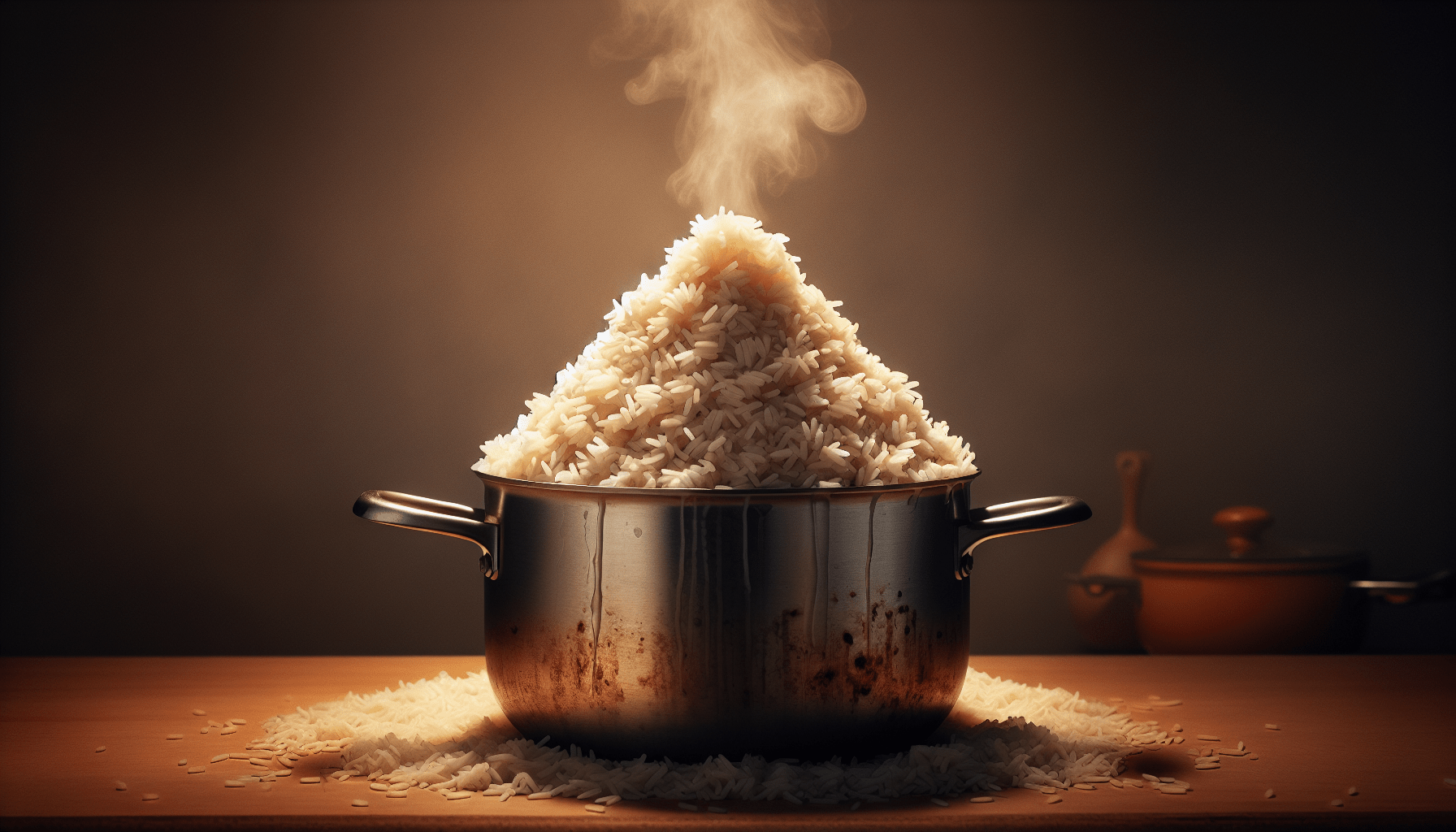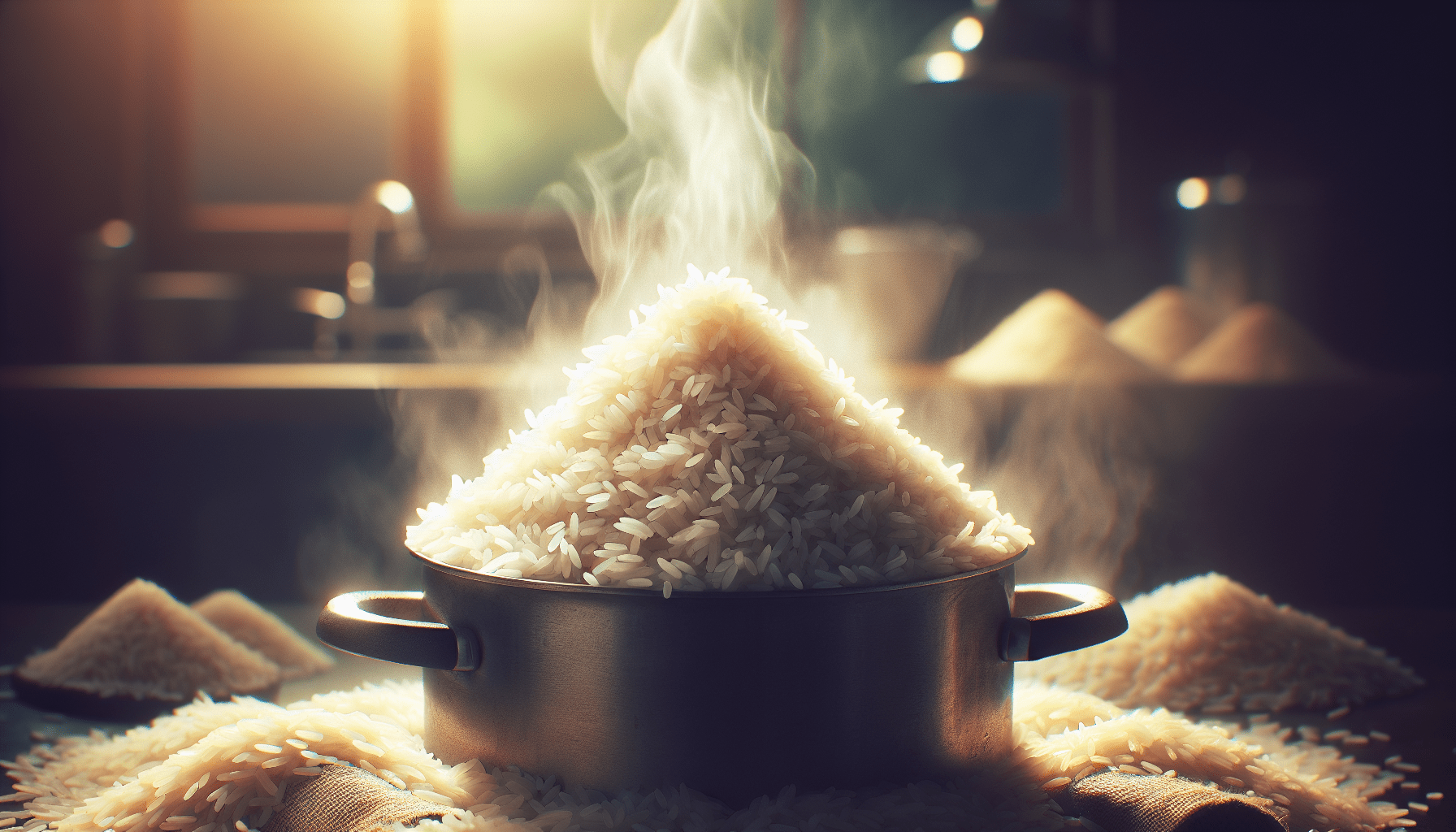Amazon Basics Medium Packing Cubes for Travel, Packing Organizers, 4-Piece-Set With Double Zipper Pulls and Mesh Top Panel, 100% Durable Polyester, Gray, 13.8"L x 9.8"W x 3"H
$17.91 (as of April 23, 2025 06:52 GMT +00:00 - More info)Have you ever found yourself puzzled by the process of cooking the perfect pot of rice? Rice, despite its simplicity and ubiquity, often trips up even the most seasoned home cooks. Whether it’s undercooked and crunchy or overcooked and mushy, achieving that ideal texture can seem like a culinary enigma.

Get an Official Zagat Restaurant Guide
The First Mistake: Stirring
Why Stirring is a No-No
One of the biggest pitfalls when cooking rice is the temptation to stir. It feels almost instinctual, like a safeguard measure to prevent burning or sticking. Yet, stirring is actually counterproductive. According to the IRRI Rice Knowledge Bank, modern rice milling ensures that a significant portion—up to 60%—of your rice bag contains whole grains, also known as head rice. These are the most desirable grains, possessing optimal texture and flavor.
When you stir your rice as it cooks, you break these whole grains into smaller fragments. This not only disrupts cooking times but also alters the overall quality of your dish. The key is to keep those grains intact, ensuring even cooking and a superior end product.
The Role of Head Rice
Understanding the concept of head rice deepens your appreciation for why stirring should be avoided. Head rice is classified as whole grains, or at least 75%-80% of the grain being intact. These grains cook more evenly and provide a better texture when undisturbed. Stirring shatters these pieces, resulting in uneven cooking and a varied texture that can make your rice less appealing.
The Second Mistake: Not Letting Rice Rest
The Importance of Resting
Another common error is not allowing rice to rest after it’s cooked. Although it might be tempting to serve it straight away, patience can vastly improve your dish. By letting your rice rest, you give the steam in the pot an opportunity to evenly distribute. Immediate fluffing or stirring can mix the dryer grains at the top with the softer grains at the bottom, leading to uneven textures.
Steam Distribution
Resting enables the steam to spread uniformly throughout the pot. This step is crucial for achieving a harmonious consistency, making each grain tender without it turning mushy. Allowing this resting period ensures your rice is uniformly cooked and perfectly fluffy.

Get an Official Zagat Restaurant Guide
Perfect Rice-to-Water Ratios
Finding Balance
It’s no secret that the rice-to-water ratio is vital. Different types of rice have varying requirements. For instance, Jasmine rice typically requires 1.5 cups of water per cup of rice, while Basmati might need slightly less water. Finding the perfect balance aligns with not stirring and letting the rice rest, all contributing to the overall quality of the dish.
General Rice-to-Water Ratios
| Type of Rice | Rice (cups) | Water (cups) |
|---|---|---|
| White Rice | 1 | 2 |
| Jasmine Rice | 1 | 1.5 |
| Basmati Rice | 1 | 1.75 |
| Brown Rice | 1 | 2.5 |
| Sushi Rice | 1 | 1.25 |
Fluffing the Right Way
Why Fluffing Matters
Fluffing is the final step before serving. Proper fluffing involves gently separating the grains without breaking them. This helps to achieve a light and airy texture, making the rice more pleasurable to eat.
The Ideal Tool
Using a fork instead of a spoon for fluffing is advisable. The prongs of a fork gently break up the rice without smushing the grains. A spoon, on the other hand, tends to press the grains together, making them sticky and dense. By using a fork, you maintain the integrity of the rice grains, ensuring they stay light and separate.
Common Misconceptions
Rinsing Rice: Necessary or Not?
Some believe that rinsing rice is either an essential step or a waste of time. Rinsing can remove extra starches, making the rice less sticky. However, it’s not always necessary, especially with varieties like Jasmine or Basmati rice, which are less starchy than others like sticky rice or sushi rice.
Lid On or Off?
Keeping the lid on while the rice cooks helps trap steam, essential for proper cooking. Lifting the lid can release this steam, resulting in undercooked grains. Resist the urge to peek; your patience will be rewarded with perfectly cooked rice.
Troubleshooting Common Issues
Mushy Rice
Too much water is often the culprit behind mushy rice. Adhering to the proper rice-to-water ratios can prevent this issue. Additionally, not allowing the rice to rest or stirring during cooking can make the consistency mushier than desired.
Undercooked Rice
If your rice is undercooked, it may require additional water and cooking time. Evenly spreading out the water and allowing it to steam properly during the resting phase can help remedy this issue.
Burned Rice
Burned rice usually results from too high a heat setting or insufficient water. Ensuring a gentle simmer and checking water levels can keep the rice from sticking to the bottom and burning.
Delicious Rice Recipes to Try
Simple Cooked Rice
Ingredients:
- 1 cup Jasmine rice
- 1.5 cups water
- 1 pinch of salt
Steps:
- Rinse the rice under cold water until the water runs clear.
- Combine the rice, water, and salt in a pot. Bring to a boil.
- Reduce heat to low, cover, and simmer for 18 minutes.
- Remove from heat and let it rest covered for 5 minutes.
- Fluff with a fork and serve.
Classic Basmati Rice Pilaf
Ingredients:
- 1 cup Basmati rice
- 1.75 cups water
- 1 tbsp butter or ghee
- 1 bay leaf
- 2 cardamom pods
- 1 small cinnamon stick
- Salt to taste
Steps:
- Rinse the rice until the water runs clear.
- In a pot, melt the butter or ghee over medium heat and add the bay leaf, cardamom pods, and cinnamon stick.
- Add the rice, stirring for 2 minutes.
- Add water and salt, and bring to a boil.
- Reduce heat, cover, and simmer for 15-20 minutes.
- Remove from heat and let it rest covered for 5 minutes.
- Fluff with a fork and remove the spices before serving.
Creamy Risotto
Ingredients:
- 1 cup Arborio rice
- 4 cups chicken broth
- 1/2 cup white wine
- 1 onion, finely chopped
- 2 cloves garlic, minced
- 3 tbsp butter
- 1/4 cup grated Parmesan cheese
- Salt and pepper to taste
Steps:
- Heat the broth in a pot and keep it warm.
- In a separate large pan, melt 2 tbsp of butter and sauté the onion and garlic until translucent.
- Add the Arborio rice, stirring to coat it in the butter.
- Pour in the wine and cook until mostly absorbed.
- Add a ladle of warm broth to the rice, stirring continuously. Continue adding broth one ladle at a time, allowing it to absorb before adding more.
- Continue this process for about 18-20 minutes until the rice is creamy and tender.
- Stir in the remaining butter and Parmesan cheese.
- Season with salt and pepper and serve immediately.
Conclusion
Cooking rice perfectly is an art form that requires attention to detail, patience, and understanding of simple yet crucial steps. By avoiding stirring, allowing the rice to rest, following the correct rice-to-water ratios, and employing careful fluffing techniques, you can elevate your rice cooking to new heights.
Rice, in all its forms and flavors, can be a delightful addition to any meal. With these tips and a little practice, you’ll find yourself cooking perfect rice every time, ready to impress your family and friends.
Get an Official Zagat Restaurant Guide






